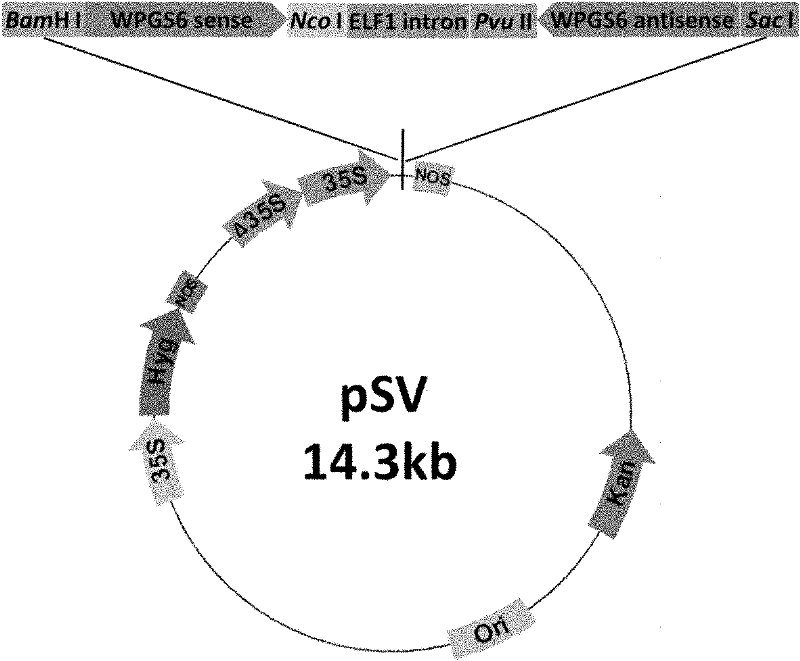WPGS5 or WPGS6 gene of eucalyptus and function of controlling and increasing plant biomass through overexpression
A gene and eucalyptus technology, applied in the biological field, can solve problems such as separation and identification work to be carried out
- Summary
- Abstract
- Description
- Claims
- Application Information
AI Technical Summary
Problems solved by technology
Method used
Image
Examples
Embodiment 1
[0031] Example 1 Cloning of Eucalyptus WPGS5 and WPGS6 Genes
[0032] 1. Preparation of Eucalyptus cDNA
[0033] Fresh eucalyptus (Eucalyptus DH32-29) leaves were selected, frozen in liquid nitrogen, and then stored in a -80°C refrigerator for later use.
[0034]Referring to the method of Murray and Thompson (1980), the total tissue RNA was extracted using the Cetyltrimethyl Ammonium Bromide (CTAB) method. Specific implementation: 1) Preheat 15 ml CTAB extraction solution in 65°C water ; 2) Grind 2-3 grams of eucalyptus frozen tissue in liquid nitrogen; 3) Transfer the sample to a centrifuge tube containing CTAB extract, vortex vigorously for 30 seconds immediately, and then bathe in 65°C water for 4-5 minutes; 4) Add an equal volume of Chloroform / isoamyl alcohol, vortexed, centrifuged at 10,000 rpm for 15 minutes at room temperature; 5) Transfer the supernatant to a new centrifuge tube, and repeat the extraction once; 6) Transfer the supernatant to a new centrifuge tube A...
Embodiment 2
[0055] Example 2 Obtainment of HOG1 and ABAP1 Gene Knockout Arabidopsis Mutants and Observation of Their Characters
[0056] Referring to the method of Hiei (1994), the pSV expression vector containing the hairpin structure composed of the conservative fragment of the target gene was transformed into Agrobacterium tumefaciens strain GV3101 by freeze-thaw method, and the colony PCR identification was carried out with primers for amplifying the gene. image 3 Shown is the identification of the genomic DNA of the WPGS5 gene silencing mutant strain, Figure 4 The results of genomic DNA identification of WPGS6 gene silencing mutant strains are shown. Mass culture positive clones. Arabidopsis thaliana was transformed by flower dipping method (refer to the method published in Plant Journal by S J Clough et al. in 1998), and the current harvest was T0 transgenic seeds. The transgenic seeds of the T0 generation were screened on MS medium containing 50mg / L hygromycin, and only the p...
PUM
 Login to View More
Login to View More Abstract
Description
Claims
Application Information
 Login to View More
Login to View More - R&D
- Intellectual Property
- Life Sciences
- Materials
- Tech Scout
- Unparalleled Data Quality
- Higher Quality Content
- 60% Fewer Hallucinations
Browse by: Latest US Patents, China's latest patents, Technical Efficacy Thesaurus, Application Domain, Technology Topic, Popular Technical Reports.
© 2025 PatSnap. All rights reserved.Legal|Privacy policy|Modern Slavery Act Transparency Statement|Sitemap|About US| Contact US: help@patsnap.com



